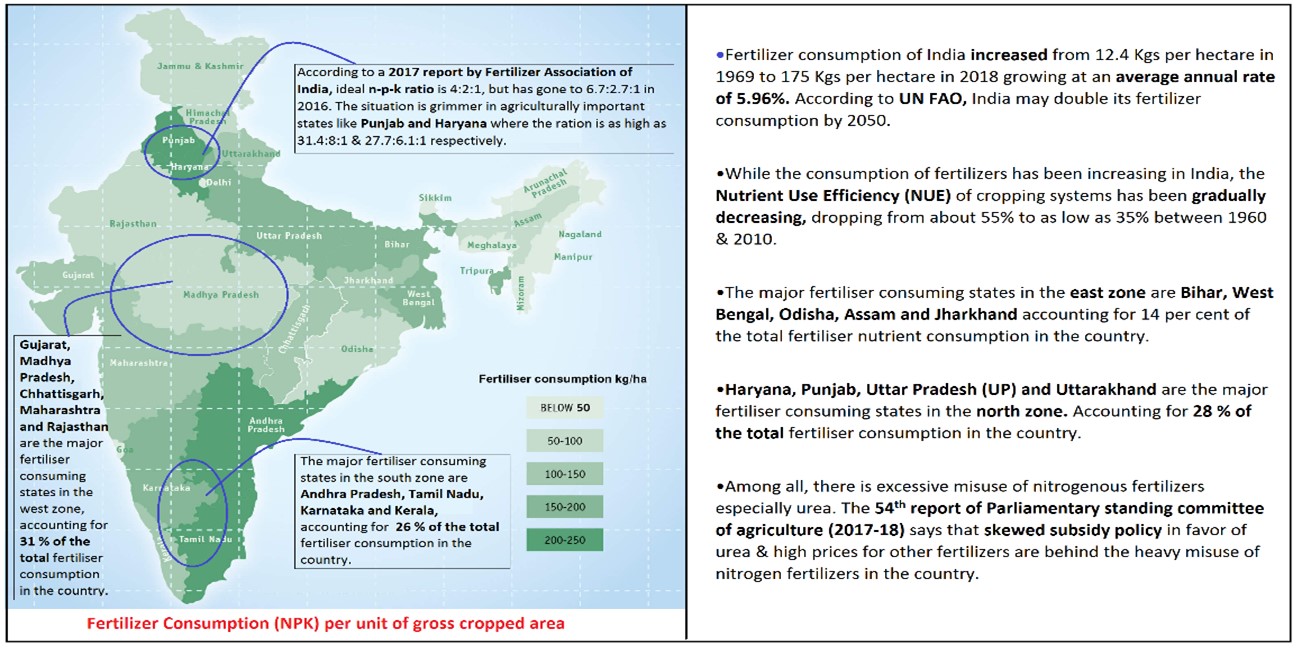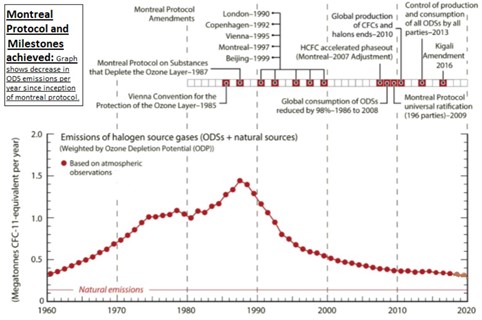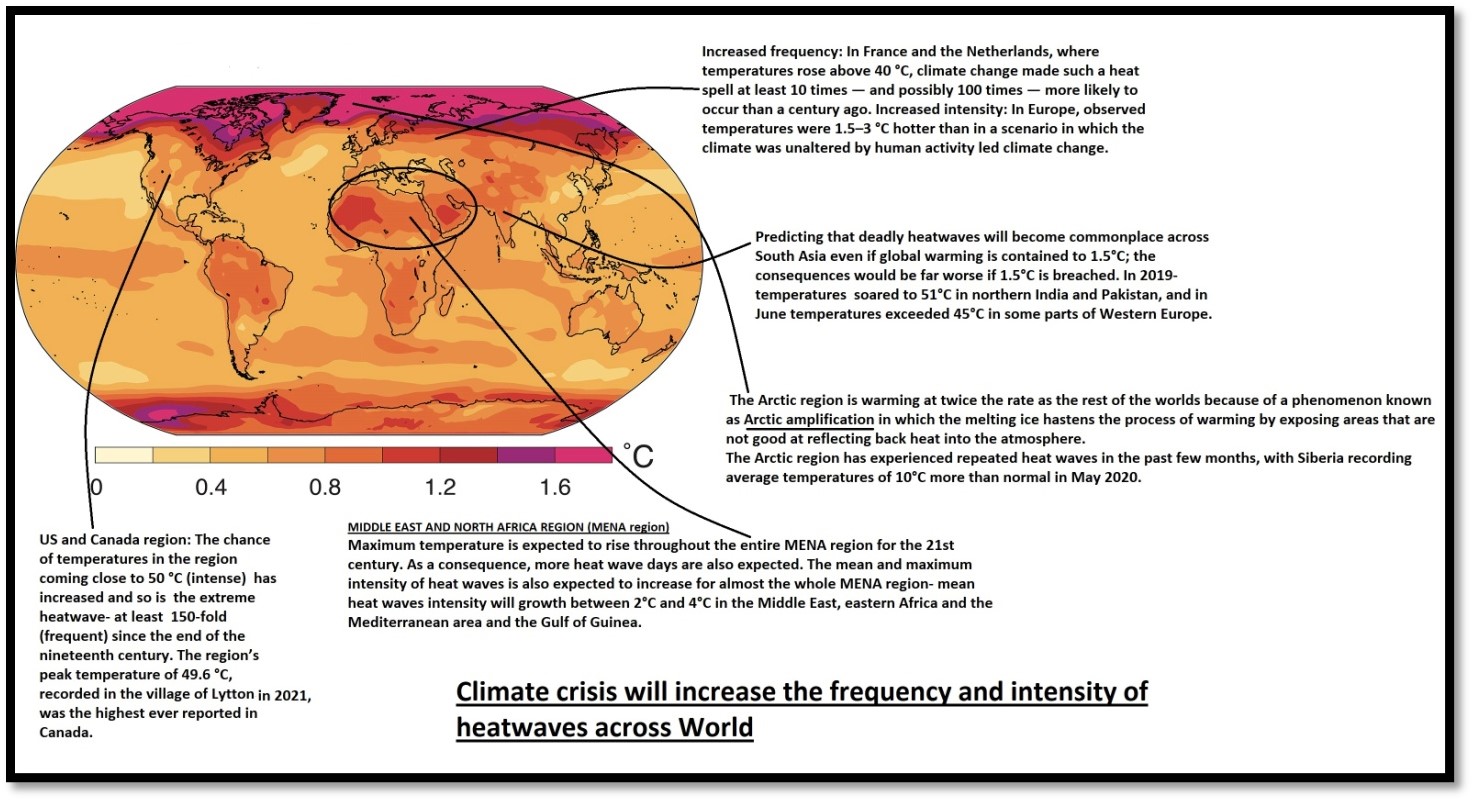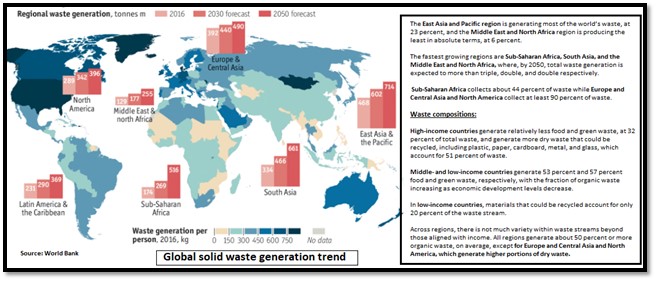09 Oct
Rapid biodiversity loss - need for paradigm shift in conservation strategies
- In news: Recently, World Wildlife Fund (WWF) released ‘Living Planet’ report which substantiate that Earth is currently going through its sixth mass extinctionin history, driven by human industrialization and consumption.
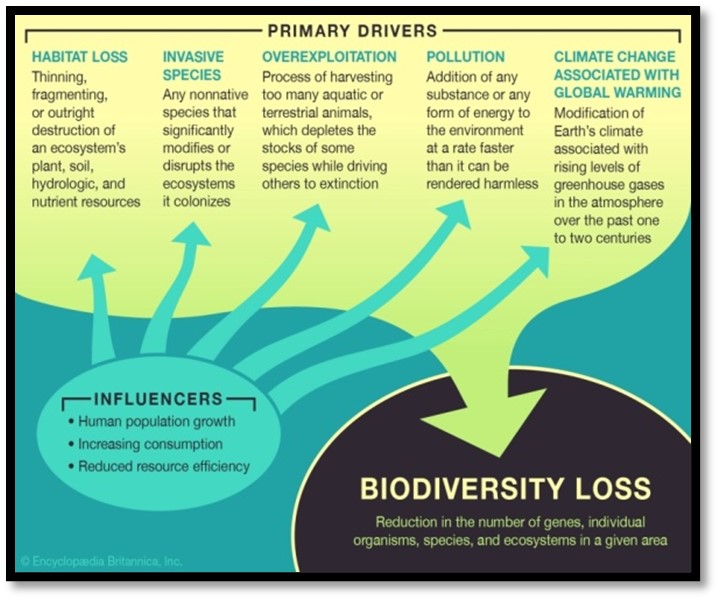
- Background:
- Biodiversity loss is defined as a decrease in biodiversitywithin a species, an ecosystem, a given geographic area, or Earth as a whole. This loss describes the decline in the number, genetic variability, and variety of species, and the biological communities in a given area. This loss in the variety of life can lead to a breakdown in the functioning of the ecosystem where decline has happened.
- Species extinction is a natural part of Earth’s history. However, the current losses are the outcomes of human actions. Human activities have increased the extinction rate by at least 100 times more than the natural rate.
- The numbers of mammals, birds, fish, plants and insects have fallen an average of 68 percent from 1970 to 2016, which is more two thirds in less than 50 years.
- The massive conversion of forests, wetlands, grasslands, and other terrestrial ecosystems has produced a 60 percent decline (on average) in the number of vertebrates worldwide since 1970, with the greatest losses in vertebrate populations occurring in freshwater habitats (83 percent).
- According to a report by the Intergovernmental Science-Policy Platform on Biodiversity and Ecosystem Services, up to one million plant and animal species are facing extinction due to human activities.
- Hence biodiversity conservation is the need of the hour because of the following significance:
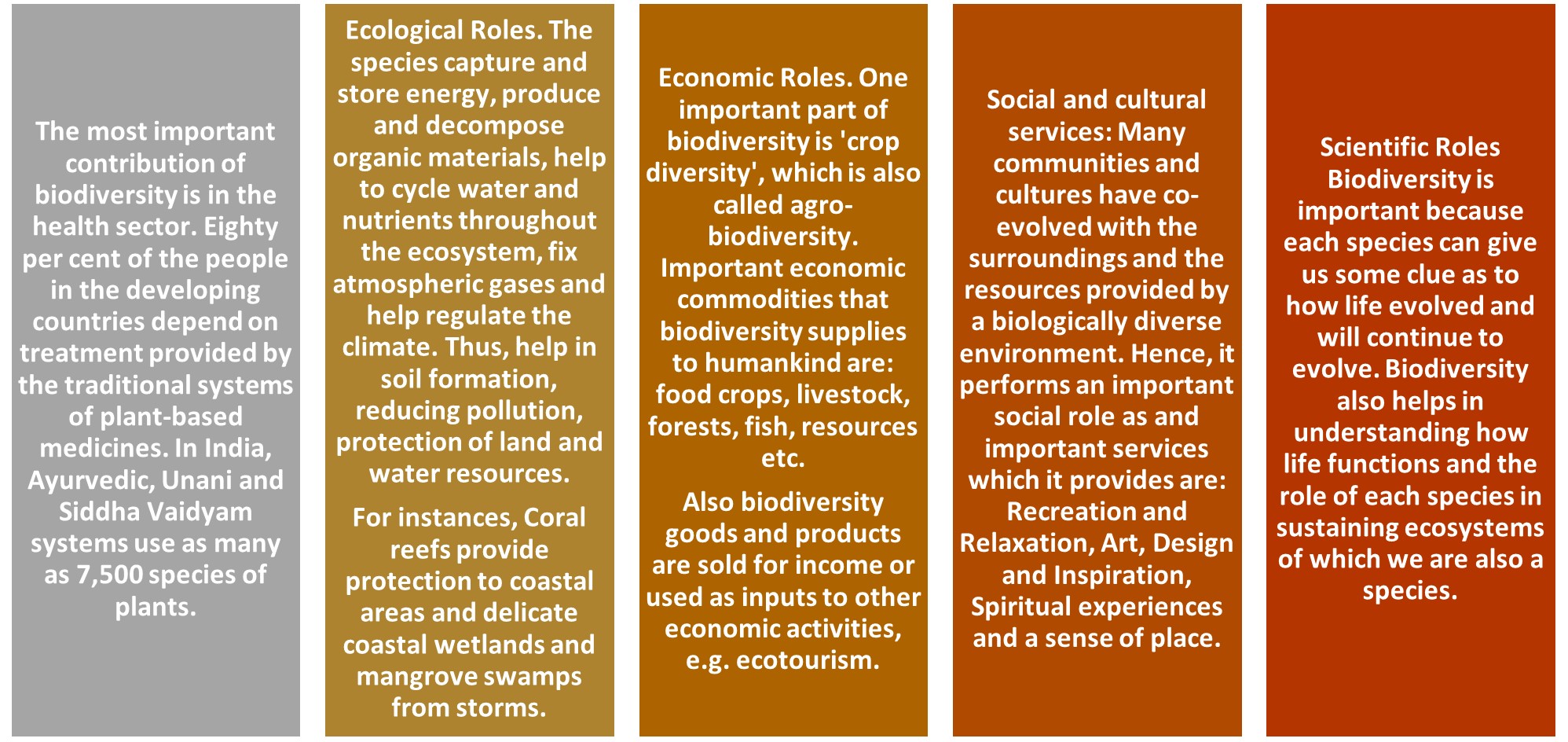
- Major Global Biodiversity losses and associated causes:

Case study: Indian biodiversity loss
India has four biodiversity hotspots and 90% of this area has been lost, according to report ‘State of India’s Environment in Figures 2021’.
- The Indo-Burma hotspot is the worst affected and has lost 95% of its vegetation area, going from 23.73 lakh sq km to 1.18 lakh sq km.
- Another worrying aspect is that in these four hotspots, 25 species have also become extinct.
- Threats to these species include illegal wildlife trade and loss of habitat. The situation is exacerbated by a lack of political will, resources, incentives for effective law enforcement, conservation planning, and action.
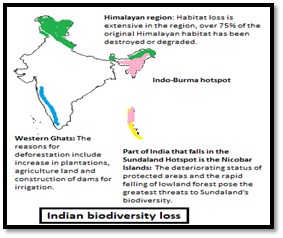
- Need for paradigm shift in conservation strategies:
- Failure of existing conservation strategies: Whether local, national or international, legal conservation instruments for biodiversity have failed in their objectives. Numerous reasons — often complex and interrelated — can result in conservation failure:

-
- Emergence of novel threats to biodiversity which are beyond scope of conventional conservation strategies:
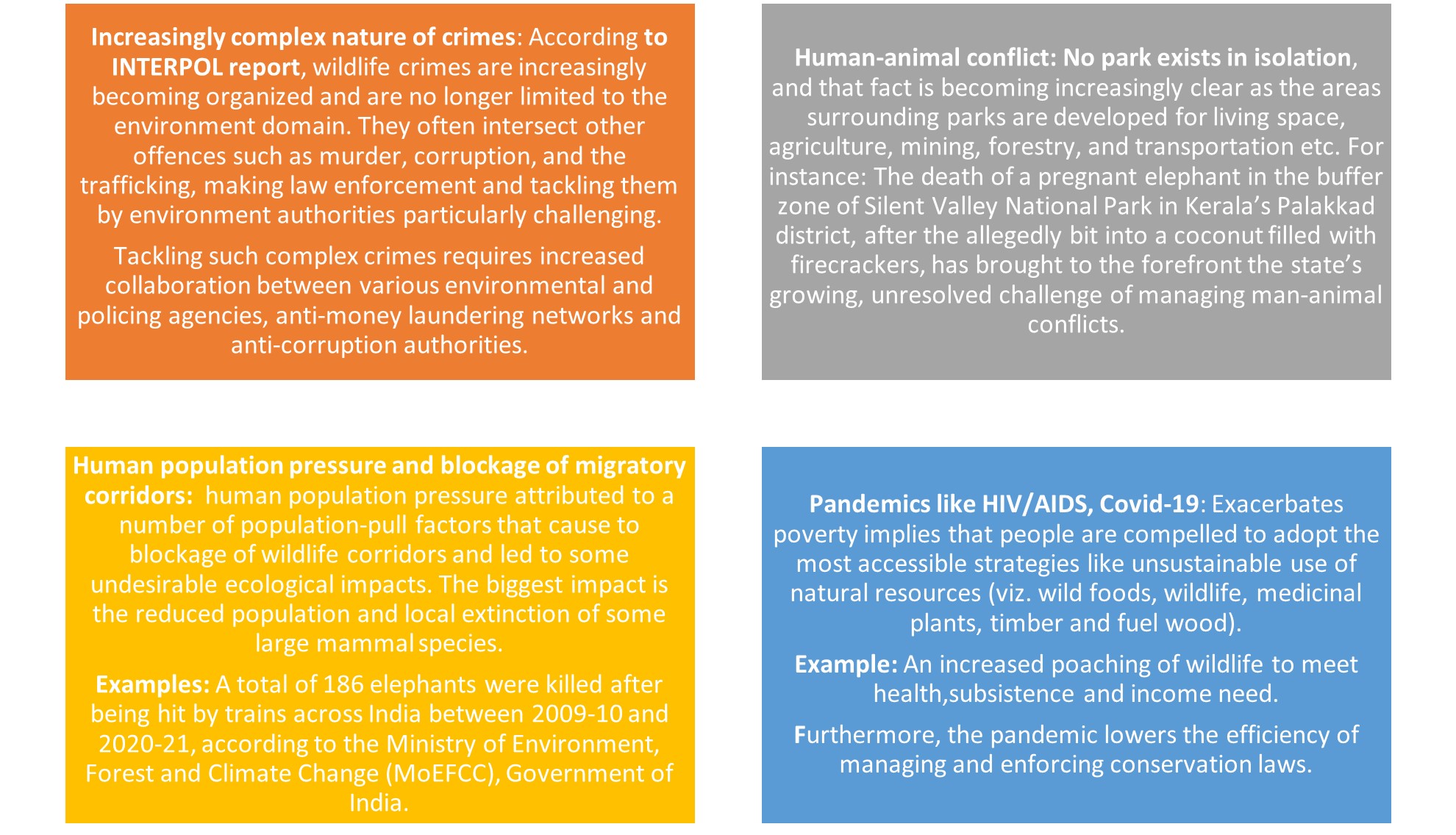
-
- Increment in economic and ecological value of biodiversity: A new World Bank report estimates that the collapse of ecosystem services provided by nature could result in a decline in global GDP of $2.7 trillion annually by 2030.
- Climate change: Climate change is increasingly being recognized as a global crisis threatening human survival and biological resources. There is growing evidence that climate change impact is expected that these impacts will become more severe in the future. Many plants and animals are unlikely to survive within uncertain climate change limits. By 2050, climate change will lead to the extinction of 15–37% of a total sample of 1, 103 land plants and animals.
Case study: Australia’s failure to avert an extinction crisis.
Australia is currently ranked fourth in the world for extinct and critically endangered species. The failure of strategic and legal framework, have aggravated the challenges of conservation efforts.
- Complexity of legal arrangements for biodiversity protection and the difficulties in taking appropriate action to stop extinction.
- Law mostly plays role in establishing procedures rather than changing how we fairly or justly treat species that are in danger.
- Restoration is mostly used only to repair severely degraded land like discarded mines. Australia’s existing rules and its legal system sustain an economy that encourages extinction. New and transformative thinking is required to enable new ways to emerge to deal with such problems.

- Way forward:
- An ecosystem approach: because people and biodiversity depend on healthily functioning ecosystems that have to be assessed in an integrated way, not constrained by artificial boundaries.
- Seek sustainable use of biodiversity resources: Use impact assessment to identify, protect and promote sustainable use of biodiversity so that yields/harvests can be maintained over time.
- Apply the precautionary principle: in any situation where important biodiversity may be threatened and there is insufficient knowledge to either quantify risks or implement effective mitigation.
- Take a participatory and welfare approach: Consult widely to ensure that all stakeholders have been consulted and that important biodiversity values are taken into account.
- Environmentalism approach: as there are limits to growth, conservationists must try to incorporate environmentalism approach in improving and protecting the quality of the natural environment through changes to environmental harmful human activities.
• Where can we use it:• Geography Optional:• P1: Climatology(Climate change) , Biogeography, Environmental Geography, Economic Geography ( LTG),• P2: Resources, Contemporary.• GS: GS3 (biodiversity).
Dumping Nuclear wastes in open ocean-hazardous impact on marine ecosystems
Why in News? - The issue of nuclear waste has again come to the limelight. Japan decided to release the accumulated wastewater in Fukushima nuclear power plant into the Pacific Ocean.
How does nuclear waste affect marine life?
- Once in seawater, radiation can hurt ocean animals in several ways—by killing them outright, creating "bizarre mutations" in their offspring, or passing radioactive material up the food chain.
- Radiation can enter the food chain though plankton and kelp and then go on to contaminate fish. Radioactive caesium and plutonium has already been found in seals and porpoises.
- Accumulation of radionuclides in the muscles, organs, eggs and bones of marine organisms.
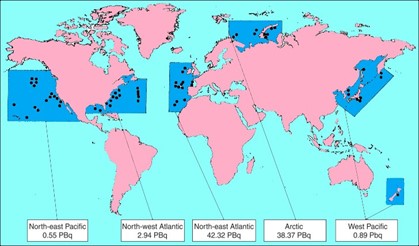

- The brown seaweed Laminaria digitata, ubiquitous in the coastal Pacific waters off Japan, absorbs iodine to help defend itself against environmental stresses such as pollution. It can have iodine concentrations some 10,000 times greater than the surrounding sea water.
- In 1954, the United States military tested nuclear bombs in the ocean around Bikini Atoll in the Pacific Ocean to see what kind of damage they would do to ships. The largest explosion was set off 90 feet underwater: nicknamed "Castle Bravo," the bomb blasted a crater 2 kilometers (more than 1.2 miles) wide in the coral reef and obliterated ocean life in the area.
- The lion’s share of dumped nuclear waste came from Britain and the Soviet Union.
- By 1991, the US had dropped more than 90,000 barrels and at least 190,000 cubic meters of radioactive waste in the North Atlantic and Pacific. To this day, around 90% of the radiation in the ocean comes from barrels discarded in the North Atlantic, most of which lie north of Russia or off the coast of Western Europe.
Conservation Efforts/Mitigation Strategies:
- The dumping of nuclear waste in drums was banned in 1993 by the London Convention on the Prevention of Marine Pollution. But discharging liquid contaminated with radiation into the ocean is still permitted internationally.
- One regional type of convention is Barcelona Convention, which covers the same problems in the Mediterranean sea.
Way Forward?
- Science-based solutions are proposed through a third-party evaluation and strict environmental assessment, multi-stakeholder public participation, integrated monitoring of the neighboring coastal countries, long-term international collaborative research, and setting up international convention for ecological compensation.
- Japan should release the wastewater gradually in consonance with international standards. Further Fukushima’s food products in Fukushima have to adhere to the 50 Bq/kg radiations. This will win consumer trust.
- In the Indian context, India should construct a deep geological repository for disposing of high-level waste. The government has to give priority to the areas having remoteness from the environment and the absence of circulating groundwater in such construction. Further, the repository must have the ability to contain radionuclides for geologically long periods of time.
Where can we use it
Paper1: Oceanography (Marine resources, marine pollution), Environmental geo (influence of man on ecology and environment, ecosystem degradation, sustainable development), Economic geo (world resources, LTG).
Paper2: Resources, contemporary issues (issues related to pollution).
GS: P3 (conservation, environmental pollution and degradation)
Implications of declining Arctic Sea Ice
In News; In 2021, the Arctic’s sea ice cover reached its minimum extent in September, 2021. The melt season offers some insight into the relentless decline of Arctic Sea ice in the face of climate change.
The IPCC in its 6th Assessment Report has concluded that “the Arctic is likely to be practically sea ice free in September at least once before 2050.”
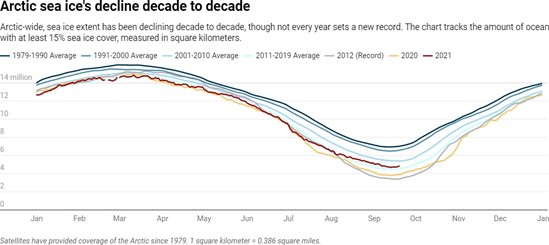
- The impacts of Arctic Sea ice loss
- Sea ice reductions affect surface heating patterns and the atmospheric pressure distribution.
- Increased light penetration and nutrient availability enhances primary production in the Arctic Ocean and its adjacent shelf
- The Arctic mammals such as Greenland Shark, Narwhal, Polar Bear shall be at loss while the migratory species shall benefit from the changes caused due to warming.
- Tundra greening is occurring across most of the Arctic, driven primarily by warming temperatures.

Ice changes are affecting greenhouse gas exchanges as well as halogen chemistry in the Arctic. In the last two decades the presence of active halogens in this region leads to significant chemical ozone loss.
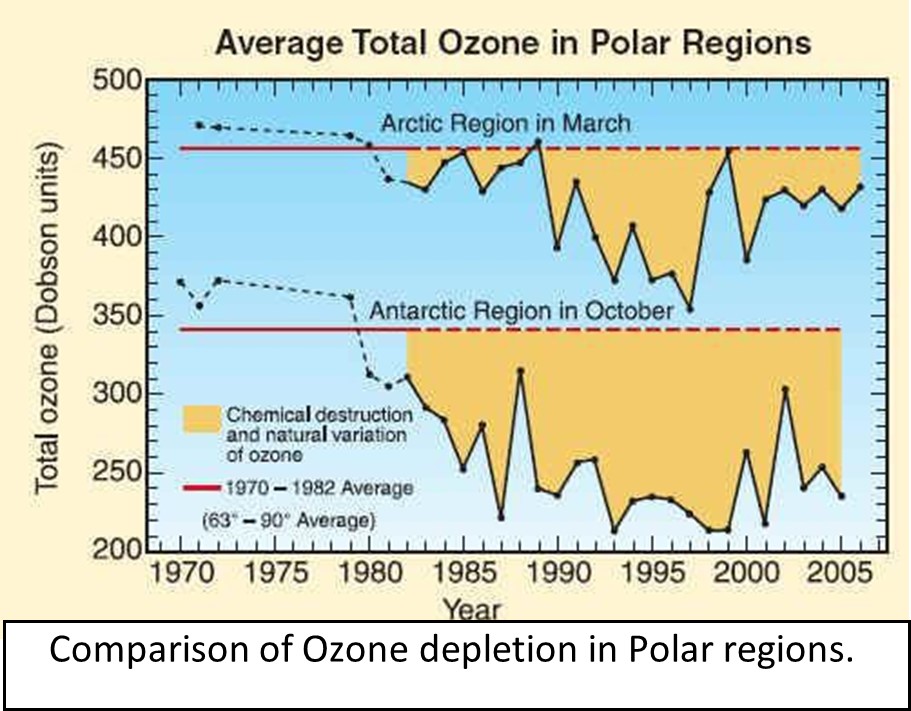
Conclusion
- The volume of ice formation during winters is unable to keep pace with the volume of ice loss during summers.
- The sea-ice loss at this rate, concerning to all the lives on Earth, can have a catastrophic impact due to rising global air temperature and slowing down of global ocean water

Fig. Ice Cover in March 2021 Ice Cover in Sept. 2021
- The effect on marine life is so prominent that the S., Canada, Russia, Norway, Denmark, China, Japan, Iceland, South Korea, and the European Union have signed a treaty to hold off oncommercial fishing in the high seas of the ArcticOcean for at least 16 years while scientists study the potential impacts on wildlife in the far north.
- The world should come to a strong conclusion in the upcoming COP-26 regarding rising global temperature as if this trend continues Arctic shall be ice free by the year 2025.
• Where can we use it:• Geography Optional• P1: Climatology(Climate change) , Environmental Geo and Biogeography,• P2: Contemporary,• GS: GS3( Environmental management).
Carbon Capture, Utilisation & Storage (CCUS)
Why in News? - Recently, the world’s largest plant named Orca (after the Icelandic word “orka” meaning “energy”) designed to suck carbon dioxide out of the air and turn it into rock has started running in Iceland.
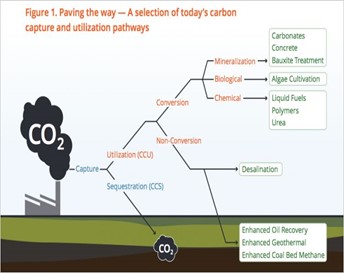
|
Accelerating CCUS Technologies (ACT) : It is an international initiative of 16 members including India to facilitate the emergence of CO2 Capture, Utilisation and Storage (CCUS) via transnational funding of projects aimed at accelerating and maturing CCUS technology through targeted innovation and research activities. India is also part of the initiative. |
What is Carbon Capture, Utilisation & Storage (CCUS)?
- It is a process that involves capture of carbon dioxide (CO2) from fuel combustion or industrial processes, the transport of this CO2 via ship or pipeline and either use it as a resource to create valuable products or store it underground in geological formations so that it will not enter the atmosphere.
- Carbon dioxide storage in geologic formations includes oil and gas reservoirs, unmineable coal seams and deep saline reservoirs -- structures that have stored crude oil, natural gas, brine and carbon dioxide over millions of years (Fig 1).
- Australia, Canada, Norway, the United Kingdom, and the United States and Japan have been largely using the CCUS technologies.
Why CCUS is needed?
- Transition to Net-Zero Emissions
- Production of Low Carbon Hydrogen
- Climate change solution
- Emissions reduction technology that can be applied across the energy system
Challenges:
- Possible leaks and the related damage from underground storage sites.
- Too high capture costs, and
- A lot of energy is needed to convert CO2 into useful products leading to more emissions etc.
Share the article
Get Latest Updates on Offers, Event dates, and free Mentorship sessions.

Get in touch with our Expert Academic Counsellors 👋
FAQs
Geography Current Affairs focuses on the contemporary issues, events, and developments in the field of geography. It covers recent geographical phenomena, environmental changes, geopolitical shifts, and related news. This differs from regular geography studies which may focus more on foundational concepts, historical contexts, and theoretical frameworks.
Updates are provided regularly to ensure that subscribers stay informed about the latest developments in geography. Typically, updates are provided on a fortnightly basis, depending on the frequency of significant events and changes in the field.
Absolutely. Geography Current Affairs serves as a valuable resource not only for Geography optional but also for GS papers, especially GS Paper 1 (covering Indian Heritage and Culture, History, and Geography of the World and Society) and GS Paper 3 (covering Technology, Economic Development, Biodiversity, Environment, Security, and Disaster Management). It aids in building a holistic understanding of various topics and strengthens answer-writing skills by incorporating contemporary examples and perspectives.
Geography Current Affairs holds immense importance for UPSC preparation, particularly for aspirants opting for Geography optional. It helps candidates stay updated with the latest developments, geographical phenomena, environmental issues, and geopolitical shifts worldwide, aligning them with the dynamic nature of the subject as tested in the UPSC examinations.

